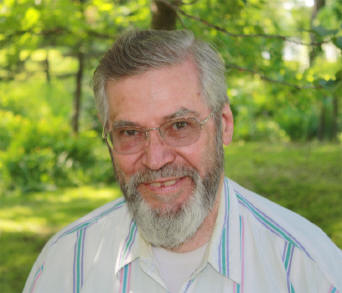 (October, 2014) My wife and I spent much of the summer of 1990 landscaping the lawn of our new house. The front yard was bounded by a bank that was too steep to mow, so I planted it with low-growing junipers; I expected to them grow and merge together, forming a continuous,
maintenance-free carpet. To prevent erosion until that happened, I covered the area between the junipers with wood-chip mulch.
(October, 2014) My wife and I spent much of the summer of 1990 landscaping the lawn of our new house. The front yard was bounded by a bank that was too steep to mow, so I planted it with low-growing junipers; I expected to them grow and merge together, forming a continuous,
maintenance-free carpet. To prevent erosion until that happened, I covered the area between the junipers with wood-chip mulch.
It was a good plan in theory, but it didn’t work very well in practice. The bank faced southward, and the next few summers were dry, so several of the junipers died. The mulch turned out to contain the spores of wood-rotting fungi, as well as seeds for several kinds of weeds that we didn’t already have, and they seemed to be better adapted to a dry
habitat than the junipers were. So what I had expected to be a maintenance-free zone became a sort of arena where I had to wage a pitched battle every couple of weeks, pulling weeds, replacing dead junipers with more drought-resistant ground covers, and replacing mulch that had decomposed. Over the next decade it gradually stabilized, but even now I still have to weed and
re-mulch regularly.
One summer in the mid-90s there was more rain than usual, and I noticed an odd-looking fungus on some dead juniper twigs on the bank. At the first casual glance it looked like small white lumps, but on closer inspection the lumps proved to be tiny cup-shaped growths, about an eighth of an inch in diameter, and each cup contained several round, egg-like
objects. After some searching, I found a drawing of them in an old textbook*. They were Bird’s-nest Fungi.
Our grandchildren were young then, and when I showed them the bird’s-nest fungi we began making up stories about tiny birds building nests under my juniper bushes and hatching chicks so small you could hardly see them. Naturally, the stories took on a life of their own; the cup-shaped fungi morphed into the nests of the smallest birds in the world, which
lived only in Grandpa’s yard and came every year to build their nests and raise their young among the juniper bushes on the bank. Since we never saw the birds, it was obvious that they must be nocturnal, and before long we could hear their songs among the other tiny peeping sounds at night. The stories grew, and it turned out that the birds could sense the coming of winter, so
on the night before the first frost they would begin their migration flight. But instead of going south, they flew north until they reached the North Pole, where they spent the winter in Santa’s workshop and earned their living by singing to the elves who were making toys.
As I look back on my own childhood, it seems that all of my elders on both sides of the family… parents, grandparents, uncles, aunts… were great story-tellers. Some of the stories were family lore and tradition, about things that had happened to them "in the old days"… the time the carriage upset and the horse ran off, the big storm when lightning struck
the haystack, that butchering day when someone forgot to take the ramrod out of the gun before he shot the pig… things that really happened, perhaps embellished just a little bit. Others were based on classic fairy tales, Aesop’s Fables, or Biblical parables, designed to teach a moral lesson while keeping the kids quiet after dinner or at bedtime. My own fable about the
smallest birds in the world had its roots in the story of Thumbelina, whose kindness in nursing a wounded swallow back to health was rewarded when the swallow carried her on its back as it flew south, and took her to a handsome prince who happened to be just her size….
This year the weather was cooler and wetter than usual, and the nests of the world’s smallest bird appeared in abundance under the junipers on the bank. I have showed them to some of my small friends and told them the fable; and I added a bit of a moral to it to teach them that every living thing has a task to do in nature, and fungi are valuable because
they break down dead sticks and leaves to make the soil richer. The youngest of them now four, understands that the fable is just a story, like Jack and the Beanstalk; but he also has picked up the lesson. My wife says I’m crazy, making up stories like that; but I can’t help it. It’s in the blood.
*The book was Fieldbook of Natural History, by Laurence Palmer, 1949. It was one of my first ecology books, and it still is one of the first places I look when I find something I don’t recognize.